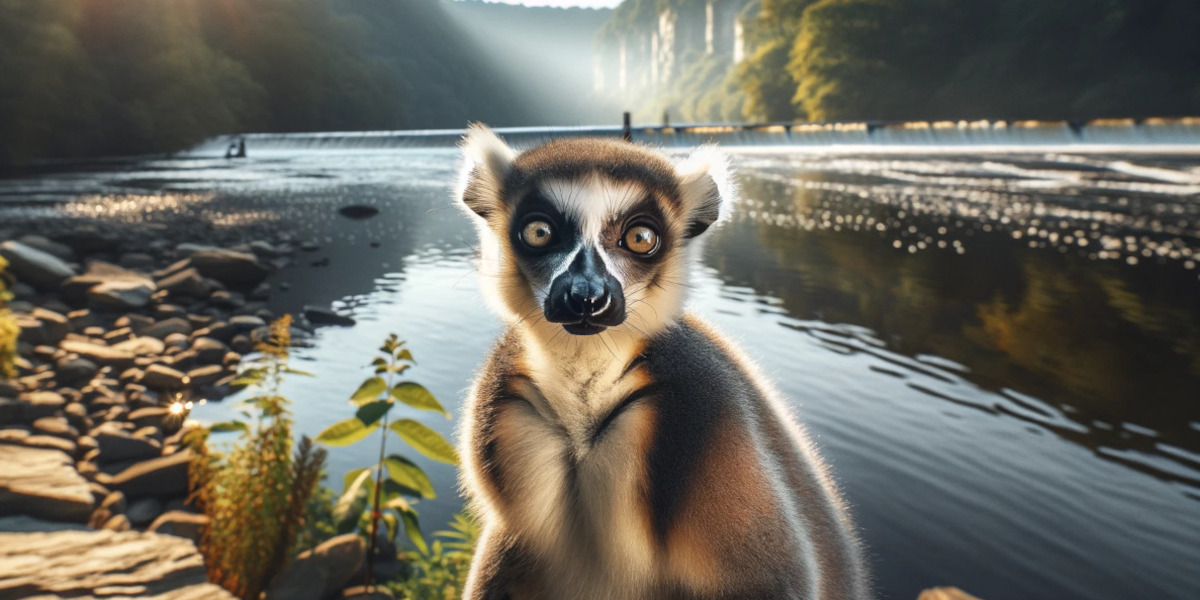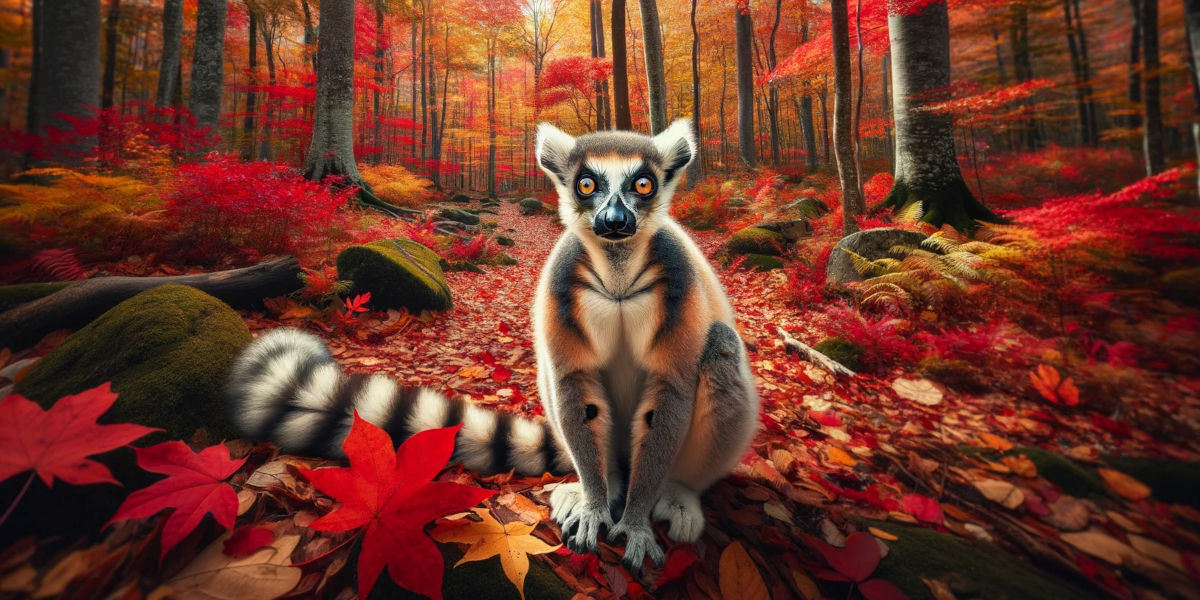
Introduction
Lemurs, with their wide eyes and expressive faces, are among the most intriguing creatures in the animal kingdom. These primates are native to Madagascar, an island nation off the southeastern coast of Africa.
A common question that arises about these animals is whether lemurs have the ability to fly?
To quickly address this curiosity, lemurs, despite their agility and impressive leaping skills, cannot fly. Unlike some other mammals that have evolved mechanisms for flight or gliding, lemurs are bound to ground based movement.
Their physical structure is not suited for flight; instead, they are adapted to an arboreal lifestyle, where they can leap between trees but not soar through the air.
In this article, we will take a close look at the abilities of lemurs, exploring their physical characteristics and behaviors, and shedding light on how these fascinating creatures have adapted to their unique environment in Madagascar.
The Concept of Flight in Animals

Defining Flight
The concept of flight in the animal kingdom is a diverse and fascinating subject, showcasing the remarkable adaptability of various species.
Flight can be broadly categorized into two main types: gliding and powered flight. Gliding involves the use of air currents and body structure to stay airborne over a distance with minimal energy expenditure, while powered flight requires active flapping of wings to generate lift and propulsion.
Many species have evolved to master these forms of aerial movement. Gliding is seen in animals like flying squirrels and certain species of snakes and lizards, which have developed unique adaptations to move through the air. Powered flight, on the other hand, is famously used by birds and insects, each group having evolved distinct mechanisms to achieve this ability.
When it comes to mammals, bats are the quintessential example of powered flight. These nocturnal creatures have wings formed by a membrane of skin stretched over elongated finger bones, allowing them to maneuver in the air. This form of flight is a result of millions of years of evolution, adapting bats perfectly to their aerial lifestyle.
Adaptations for Flight
Adaptations for flight in animals are as varied as they are remarkable. For powered flight, birds and bats have developed strong chest muscles to power their wings.
In gliding animals, adaptations include flattened bodies or skin flaps that create lift, as seen in flying squirrels and gliding frogs.
In contrast, lemurs, despite their agility, lack any of the physical or anatomical adaptations required for flight. Their bodies are built for an arboreal lifestyle, with strong hind limbs for leaping and gripping hands and feet for climbing.
Lemurs do not possess the wing structures, lightweight bones, or the muscle power necessary for flight. Instead, their physical characteristics are optimized for maneuvering through the dense forests and treetops of Madagascar, enabling them to leap great distances but keeping them firmly within the bounds of gravity.
Misconceptions and Myths

Myths About Flying Lemurs
The animal world is often shrouded in myths and folklore, and lemurs are no exception. One of the most persistent misconceptions is the idea of ‘flying lemurs’.
This term is misleading and has contributed to a common misunderstanding about the capabilities of these creatures. Despite their name, flying lemurs neither belong to the lemur family nor do they possess the ability to fly.
These myths are often rooted in folklore and cultural beliefs, where animals are sometimes given fantastical abilities.
In some cultures, lemurs have been associated with spirits or ancestors, and such cultural narratives can sometimes blur the lines between reality and myth. The misnomer ‘flying lemur’ likely arises from the animal’s impressive gliding ability, which can be easily misconstrued as flight.
Scientific Clarifications
From a scientific standpoint, it’s essential to clarify that true lemurs, native to Madagascar, do not have the ability to fly or glide. Lemurs are primates adapted to an arboreal lifestyle, skilled in climbing and leaping among trees, but they lack any anatomical structures that would enable flight or gliding.
The confusion often arises with a different species known as the colugo or the so-called ‘flying lemur.’ Colugos are not lemurs but are more closely related to primates. They are capable of gliding significant distances between trees, thanks to a special membrane called a patagium, which extends along their limbs.
This ability to glide is often mistaken for flight, but it’s important to understand that gliding is a form of passive flight. Gliding animals cannot generate lift and must start from a high point to glide downwards, unlike birds or bats that can actively ascend and maneuver in the air.
In summary, while the term ‘flying lemur’ conjures images of lemurs soaring through the skies, the reality is quite different. True lemurs are bound to their natural habitats, adept at navigating the treetops but not equipped for flight.
Close Relatives – The Flying Lemur Misnomer

The Colugo – Often Mistaken for a Flying Lemur
The colugo, commonly referred to as a ‘flying lemur’, is an intriguing animal that has often been the subject of misconception. Native to Southeast Asia, colugos are known for their remarkable gliding ability.
Unlike true lemurs, colugos possess a unique adaptation: a large, thin membrane called a patagium that stretches from their face to the tips of their toes and tail. This extensive skin flap enables them to glide long distances between trees.
Physically, colugos differ significantly from lemurs. While lemurs are primates with a more typical mammalian appearance, colugos have a more flattened body designed to support their gliding membrane.
Behaviorally, colugos are mostly nocturnal and solitary, unlike many lemur species which have varied social structures and are often active during the day.
Why Colugos are Not True Lemurs
Despite the misleading common name, colugos are not closely related to lemurs. The confusion likely arises from superficial similarities in their lifestyles and the misinterpretation of their gliding skills as ‘flying’.
Genetically and evolutionarily, colugos are quite distinct from lemurs. While lemurs are a type of primate found exclusively in Madagascar, colugos belong to the order Dermoptera, a separate evolutionary lineage.
The taxonomy of colugos places them closer to primates in the evolutionary tree, but they are not classified within the primate order. This distinction is crucial in understanding their place in the animal kingdom.
In conclusion, the term ‘flying lemur’ is a misnomer that has led to some confusion about these animals’ abilities and relationships. Colugos, with their unique adaptations for gliding, represent a fascinating branch of the mammalian family tree, distinct from the lemurs of Madagascar.
Conclusion
In exploring the question, “Can lemurs fly?”, we have journeyed through various aspects of lemur biology, debunked common myths, and clarified scientific truths.
The journey has led us to a clear answer: No, lemurs cannot fly.
The confusion surrounding the ‘flying lemur’, actually the colugo, served as a crucial point of discussion. This distinction not only corrects a common misnomer but also highlights the fascinating diversity and complexity of mammalian evolution.
In conclusion, the question of whether lemurs can fly opens a window into a broader understanding of the natural world. It reminds us of the importance of scientific inquiry and clarity and the incredible adaptations of animals across the globe.
While lemurs are bound to their treetop realms, their role in the ecosystem and their evolutionary journey are as compelling as any flight through the skies. This inquiry into lemur capabilities enriches our appreciation of these fascinating creatures and underscores the importance of preserving the delicate ecosystems they inhabit.




